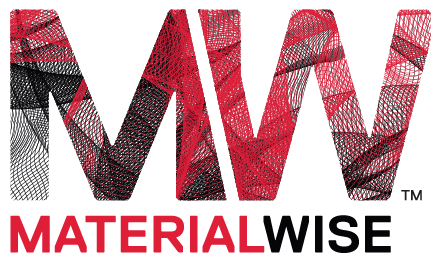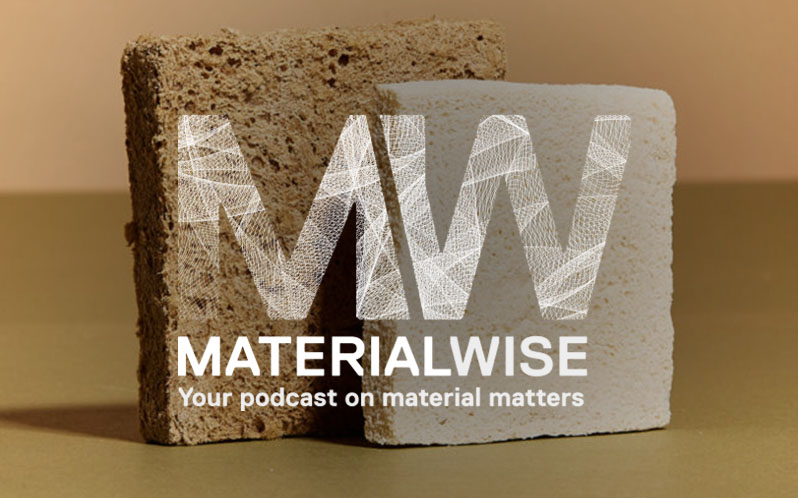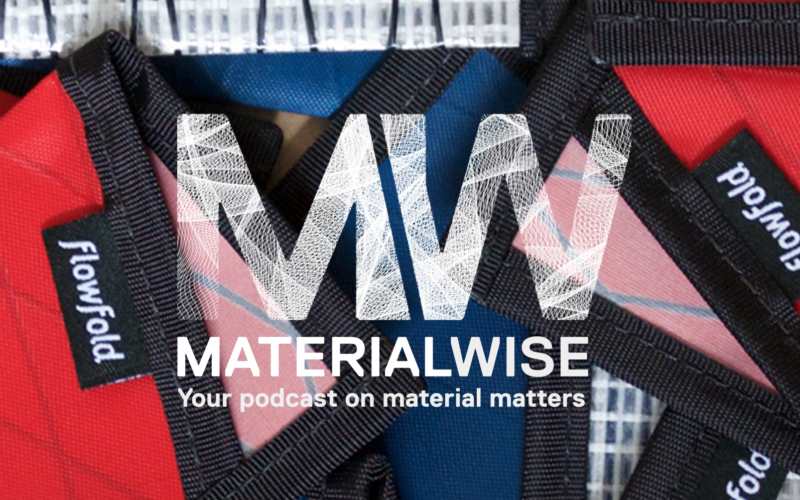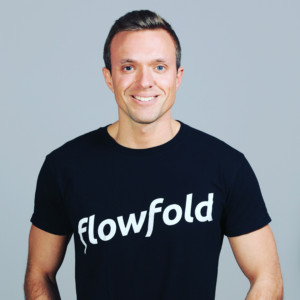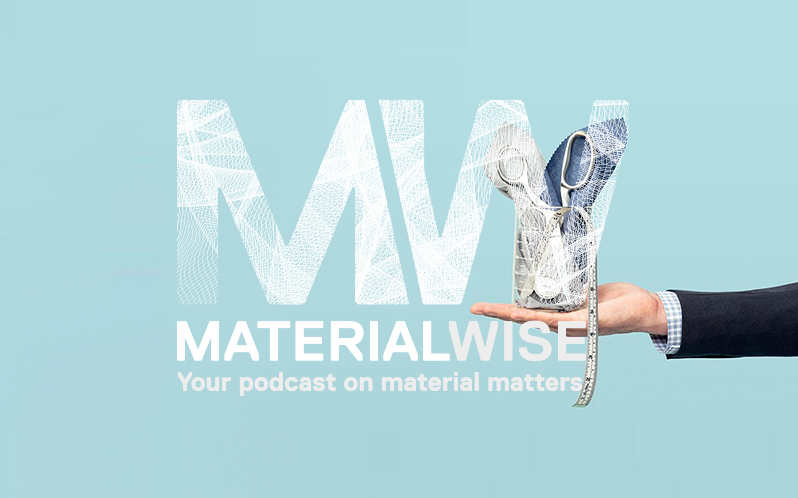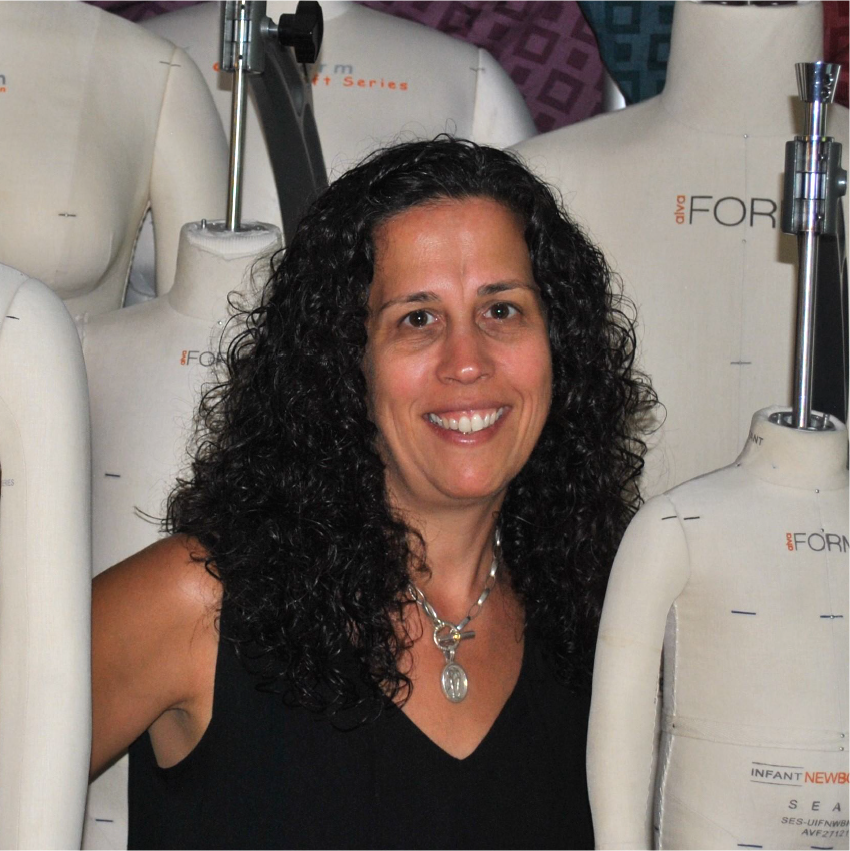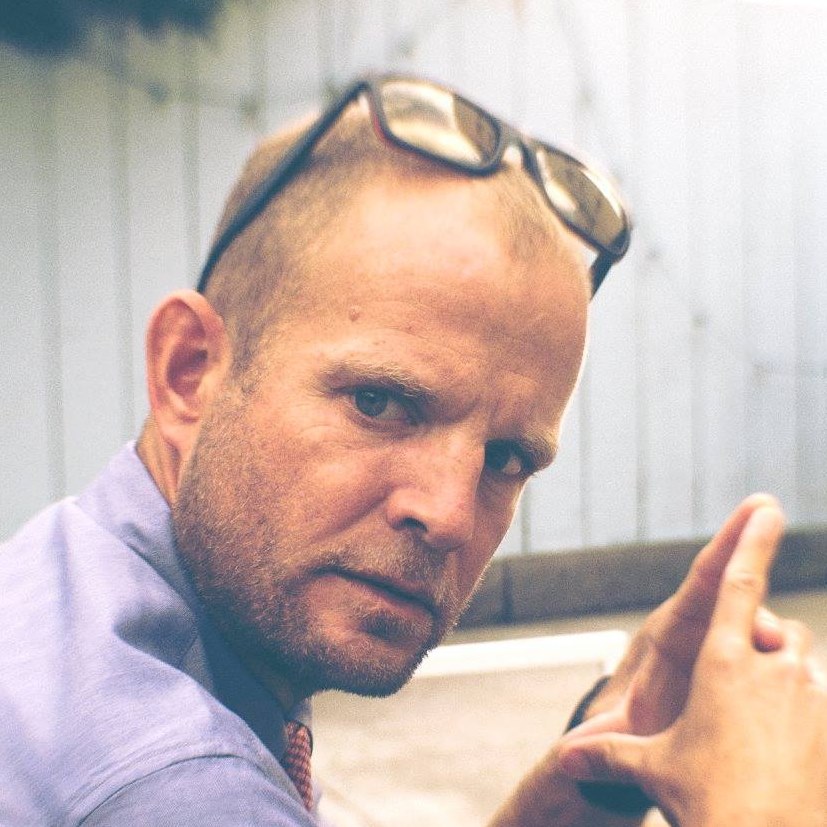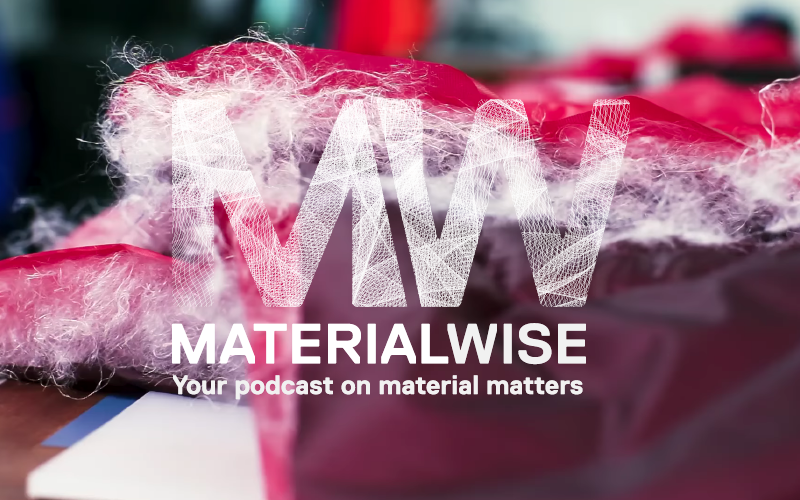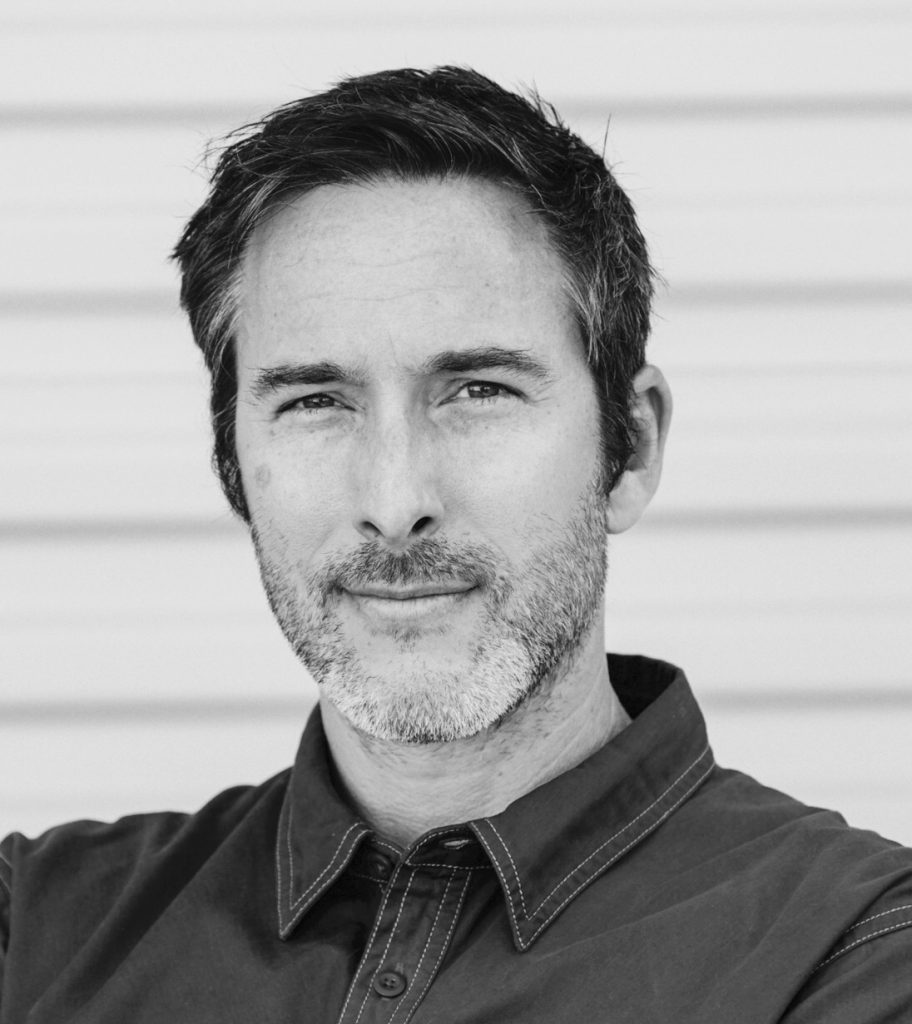Episode 18: Dr. Andrew Dent | Material Connexion
Dr. Andrew Dent on creating his dream position at Material Connexion.
Dr. Andrew Dent is the executive vice president research at Material ConneXion, a world -class library known for its innovative problem solving and thought-leadership by influential brands across every industry. We discuss a range of topics from how Dr. Dent became interested in material science, his fondness for the human interaction side of materials, and how this combination led him to his post at Material ConneXion where he has been for the last 20 years. We also talk about what sustainability means to him, his passion for waste and the future of material development – it’s looking bright!
Dr. Dent’s Interview Transcript
Nancy: Hello, I’m Nancy Fendler, and you’re listening to Material Wise, your podcast on material matters. It’s my chance to talk to designers, product developers and other guests about what influences them to create. Why and how they select the materials they choose, and the relationships they’ve built with their customers and industry. I hope you’re all well and having a positive start to the new year. Material Wise has been quiet over the course of the pandemic, however we’re excited to be back this season with a wonderful lineup of interesting guests, beginning with my guest today, Dr. Andrew Dent. Dr. Andrew Dent is the executive vice president, research, at Material ConneXion. For those of you who are unfamiliar with Material ConneXion, it’s a world class library and consultancy known for its innovative problem solving and thought leadership by influential brands across every industry. Dr. Dent’s research directs the implementation of consulting projects and the selection of innovative, sustainable and advanced materials to Material ConneXion’s library, which currently has over 7500 materials. If you’ve never been to a Material ConneXion library, it’s a real treat and I highly recommend it. Dr. Dent has helped numerous Fortune 500 companies from Whirlpool, to Adidas, to BMW and more, develop or improve their products through the use of innovative materials. He speaks frequently on innovative material strategies, and is the co-author of the Material Innovation book series. We had a great conversation, discussing a range of topics from how he became interested in materials and material science, and how this eventually led him to Material ConneXion, where he’s been for the last 20 years. We also talk about what sustainability means to him, and we learn quite a bit about his passion for waste. He believes the future of material innovation is bright, and I’m excited to share our discussion on this episode of Material Wise. I hope you enjoy. Nancy: Hello Dr. Dent, it’s wonderful to have you on Material Wise.Dr. Dent: Nice to be here, thank you.Nancy: You’ve been involved in this business for a long time. How did you get involved, or how did you get interested in material science?
Dr. Dent: Actually, I have been asked that one before and honestly, I cannot remember. It was probably 30 years ago. Trying to remember exactly why I was interested in material science, I think it was because I just had a love of the physical world. Rather than just thinking about your surroundings in terms of color or form, I really thought about what they’re made of. I was always fascinated about what things are actually made of. And that, I think, material science is probably the best way of investigating that, so that’s how I ended up there. But I must admit, it’s a little murky after 30 years.Nancy: Can you just share a little bit about how you got started? And, a little bit about your background in material science?
Dr. Dent: Sure, yeah. I trained as a material scientist, there is a degree in that. I took an undergraduate and PhD in material science. It’s definitely the unloved step-child of the engineering degrees. If you think about chemical engineering, civil, mechanical, those types, they have an awful lot of following, there’s an awful lot of people doing them. Material science, a lot of people don’t even know it exists. It’s definitely a smaller discipline, it is an engineering discipline, and it resulted in me doing a PhD and then working for a number of different organizations. Doing a little bit of teaching, out at universities, just under the area of material science. I did love that, it allowed me to get my hands on an awful lot of innovative and interesting new materials. So that, for me, was great. The challenge I had was that I realized I wasn’t necessarily very good at the science part, I wasn’t very good at the teaching and the research, and I wanted to do something a little bit different. I wanted to do something a little bit more of a challenge. I started casting around for things I could do with this material science degree.Nancy: It sounds like you probably like more of the human side of it as well, collaborating. What drew you to Material ConneXion?
Dr. Dent: I think it was this result of not being quite satisfied. Loving the materials, but not necessarily liking the way in which I was doing work. I think you’re right, it was the human interaction I was missing. I was actually at a friend’s house and on his coffee table, there was a flyer for Material ConneXion. I looked at it, I thought okay, I want to work there. It satisfied that need not just to know about the physical world and know about materials, but also to interact with a different type of person. The then owner of Material ConneXion, George Beylerian, I called him up. I said, “I want to work with you, I think I can do some real good work for you.” He said, “No, we’re not interested. We don’t have any open positions.” Okay, fair enough. So then I called him up again, probably about two or three weeks later. I said, “No really, just allow me to come and see you. I’ll convince you that you need to have someone like me on your staff.” He eventually relented, I ended up sitting down with him at the Steelcase Restaurant, just near Columbus Circle, this is around year 2000. We just started chatting, and I think I finally managed to convince him. He said, “Okay, come and work with us.” It took a little bit of effort, because I think they weren’t really expecting someone like me. The majority of the people who had been working there previously tended to be in the design field, they weren’t necessarily looking for a PhD material scientist. But, I think my hope is that I actually provided some value and actually expanded their understanding of what materials could be.Nancy: What actually is your role at Material ConneXion? What do you do?
Dr. Dent: Well, I’ve had a number of different roles. At the moment, I’m executive vice president in charge of material research. Because I’ve been there so long, two decades, my role has shifted. I have a very talented colleague, Gayatri Keskar, who oversees the consulting department, the area of Material ConneXion where we actually deal with directly consulting work with our clients. I tend to work on our mentoring and overarching role, where I review all the materials that come into our Material ConneXion library, I assess all of the work that’s going out for our consulting projects, I interact with our licensees. It’s more a mentoring and overseeing role. I do a lot of consulting, too, and obviously do a lot of presentations. We’re about to do a presentation in Turkey, for a design conference. So I do those sorts of things as well, but the majority now is just making sure that the direction of our materials innovation and our work is going down the right path.Nancy: Yeah, it’s a big job. Particularly, I would think, during the pandemic where people may not have been able to come into the library. You have libraries not only in New York, it’s international?
Dr. Dent: We have a number of libraries around the world, in Europe, in Asia. Yes.Nancy: How have you executed business during the pandemic?
Dr. Dent: I was surprised and pleased. The work we have been doing hasn’t really suffered at all, in the delivery of work to our clients. We had a very good year in 2020, which I feel bad saying that sometimes because a lot of people didn’t have a good year. But, we’ve actually managed to adapt relatively well. Yes of course, I would love to have more clients come into the physical library. And, we are still open for appointments, so we will actually have people in. But of course, it’s socially distanced, we can only limit the number of people, so we still can do that on a limited basis. But, what we’ve managed to do is, through just very efficient shipping and delivery of samples, we’re able work, a lot of it’s on Zoom calls. We delivery an awful lot of virtual presentations. We’re doing fewer workshops, because the workshops, they benefit from that one-to-one, hands on interaction with the materials with a whole group of people, so fewer workshops. But, we’ve transitioned a little bit and we’re doing more direct consulting where clients come to us for a particular need and we can deliver that through Zoom presentations, we can send samples. We’ve had examples where we’ve had a company, or a client, that has two or three locations, so you send samples to those three different locations so everyone’s looking at the same material at the same time. You’re not in-person, but it’s as close to. I think we’ve managed to adapt, and as a result we’re doing well. I’m excited about the future.Nancy: Yeah, that’s great. I know we’ve all had to adapt in different ways. But, having been to the library a few times, and had clients who’ve submitted products. I don’t know if you still have the box? But, you shipped things out, you’ve done this before. Or, I should say Material ConneXion has done this before, that method. I’ve found, in speaking with designers and material developers that they’ve found quite a bit of creativity during the pandemic, during this time. Have you seen some new exciting materials pop up in this year?
Dr. Dent: I’m a great believer that adversity can generate just incredible bursts of creativity. I think given an unlimited budget can be often the death knell for real creativity. If you think about music in the ’70s and ’80s in the UK, you turned on an awful lot of great music as a result of the economic climate not being that good. I think adversity has its advantages. I think yes, the pandemic has forced people to perhaps adapt and think differently. We’ve had, actually, a surprising number of people who’ve come to us, who over the last perhaps three to five years, had in their head an idea about what they wanted to create, whether it’s a product or a material. I thought okay, when I’m sitting at home with not an awful lot of stuff to do, it’s something that bubbled up again. And they thought, “How do I then bring this material or this product out into the world?” We’ve had an awful lot of clients who are just individuals who have a patent on a particular material or technology and said, “Okay, I want to see if I can now develop this.” So, it’s actually been quite an exciting year in terms of just individuals just trying to new materials and new challenges to the market. I think, with clients as well, again, the adversity is what’s helped us somewhat in that, as some companies have reduced the workforce, typically the first area to go tends to be R&D, research and development, because it’s not a must have it’s a nice to have. For some companies, they have it because it allows them to generate new product, but a lot of companies, they see that as an expendable part. So once they do bring that down in size, we can then fill that gap. Again, we’ve adapted to make sure that we can fill in the role of research and development for some of the smaller corporations.Nancy: Wow, that’s great. I understand that sustainability is a big part of probably your personal and your professional philosophy. Sustainability means so much to different people. I’m just curious what sustainability means to you.
Dr. Dent: Okay. If we look back 10 years, from let’s say 2010 towards 2015, you had a change in the way that people approached product development and new product creation. They were always aware of sustainability, but it was one of those things they kept on saying, “Well, we can’t really afford it. We’ll do it next year. It’s a nice idea, but it’s not really part of what we want to do.” And then, over those few years, it transitioned through to, “Okay, sustainability needs to be part of the pillars of what we use in order to create product.” So price, performance, aesthetics, and the fourth one became sustainability, so it became we need to include this. What you have is you’d have a sustainability group, or a department that would think about the way material, a product could be sustainable. But, in the last probably three to five years, very much so perhaps in the last two to three years, we’ve now seen sustainability become front-and-center. Now, it becomes a leader in that group. For the most part, you’ve got incremental improvements in you’re trying to reduce the cost of your product, you’re trying to improve the aesthetics, and then performance, those tend to be incremental. Now, they’re actually considering sustainability as a way of completely changing the product itself. Changing the material entirely, changing the design entirely, in order to adapt to sustainability. I think sustainability has gone from non-existent, to okay, we are aware of it, to it’s important to have that as part of our portfolio, to it’s the main thing we’re now thinking about when we’re designing a new product. I think that’s interesting to note, over the last 10 years. For us, although we are very much within the design field, in fashion, and architecture, and automotive, and all those different design industries, we’re very much interested and driven by data, numbers. Now, it isn’t always the most interesting thing for designers to know about numbers, but what we tend to do with sustainability is we tend to separate it out into quantifiable attributes. Because sustainability is a very large term, we can talk about eco or green, but they’re just words. What we do, though, is we separate them out. Rather than is a material sustainable, we think about okay, does it have recycled content? How much? Is it post-industrial, IE straight out of the waste generated in the factory, or is it post-consumer, the stuff you put out on the curb when you recycle? Does it contain bio content, stuff that’s renewable? How much water does it use, is it reducing the amount of water it needs? What’s the carbon footprint? If we can separate it out into these specific attributes, so rather than saying is something green or not, is something sustainable, you can say okay, this material or this product has just reduced its water usage in production by 50%. That’s a number, to me, that makes an awful lot of sense and it allows you to quantify your improvements to sustainability. So rather than thinking about it as a general term, decide which aspects are important to you. We do this a lot with clients. What’s your North Star? What is the main aspect of sustainability you want to attack, because you can’t deal with it all. I take Levis as an example. Now Levis, their biggest challenge was water. You make a pair of Levis jeans, and the amount of water, the thousands of gallons that are used, in order to grow the cotton, produce the product, then dye the product. And then, often after that, stone wash or other treatment somehow affect it. So, throughout the entire cycle, using a large amount of water. Water was their North Star, reducing the amount of water they used. Maybe they weren’t getting into the most sustainable aspect of other areas, but for them water was the main thing they needed to tackle because that was the thing they could most affect. If you’re ever producing a garment or product, or something you’re designing, what’s the most important sustainability aspect? Because if you try and attack all at the same time, you’re never going to do it, you’re just never going to succeed. Think about your North Star, think about what that is, and then attack that. But also, think about how you can do that quantifiably. Rather than just saying, “We’ve now got a green product,” what is the specific attribute, what’s the specific thing you can state to your customers that you’ve reduced or improved.Nancy: That’s so well put, because my clients are a material brands and they sometimes feel as though they have to do everything, bio, pre-consumer, post-consumer, just as you were talking about. Sometimes it’s driven by brands, sometimes it’s driven by consumer. I think what everyone’s trying to do is to do their best. I also understand that you have some interesting ideas on how waste can be used to make sustainable products.
Dr. Dent: I do love waste. It is possibly one of my favorite topics, just because I wish we’d remove the word waste. I’ve talked about this in the past. Nature has zero waste, because everything that is deposited by some animal or plant is then taken up by another animal or plant, so it goes in a complete cycle. No matter how many billion or trillion ants there are, and the amount of animal mess they have, they still have zero effect on the overall environment because basically, anything they do is then recycled back into the system. For me, waste, we need to follow that and try to think about any of the waste produced in the mining, in the production, in the use and also the end of life of anything that we use. Waste is the wrong word, it’s just another resource. I think we’ve got a lot better at accepting recycled content. It was an interesting thing when we started to see recycled content plastics in our food storage containers or in our drinking containers. Previously consumers would have said, “Well, I’m not putting recycled material in that, that’s dirty.” I think we now have an understanding. We’ve seen products from cow waste, we’ve seen products from old mattresses, we’ve seen even chewing gum is being used, and that’s a greater understanding that we can clean and repurpose these materials, and it’s a resource, because we know that the planet as a finite amount of resources. Until we can start mining Mars, which I think is still a long way away, we need to accept that we’ve only got one planet so let’s use those resources. For me, I think of landfills and I think of just a goldmine of potential materials you could use. I think we’re getting better at using waste, we’re making sure that it’s cleaner, we’re making sure that it’s more readily available. I think if you’re producing anything, find out where in your current production processes you can utilize your waste, and a lot of them are making it efficient. But also, how do you collaborate with other companies whose existing waste could be a valuable resource for you? I think if we’re going to survive and do well, we need to understand that it’s not going to be alone. Any company that’s trying to do everything alone, I think, is going to be challenged. You’re going to need to reach out. I was fascinated by … Colgate came out with the first recyclable toothpaste tube, and they’ve been working for 10 years on this recyclable plastic material for toothpaste. It was a specific type of combination of different plastics. But, it is easily recyclable. They said, “Okay, we think this innovation’s so interesting, we’re going to offer it to other toothpaste manufacturers because we understand that, if we develop something so valuable, potentially things that wasn’t recyclable before but now is recyclable, we can’t keep it to ourselves. We’ve got to offer it to others.” That level of collaboration, I think, is going to be essentially going forward because we can’t be in this alone. If we’re assuming that we have to basically just do it by ourselves, we’re losing out on potential resources from others, and also selling some of our waste materials to other companies as well.Nancy: Yeah, that’s so fascinating. You mentioned something that, when I heard on the radio this morning about the Johnson and Johnson vaccine actually collaborating with its competitor, Merck, to get more out. That is just another competitor’s having to collaborate for the greater good.
Dr. Dent: I think we need to treat sustainability like we treated the pandemic. It was amazing. The ability to move huge resources, and to ensure that you had a number of different organizations working on a vaccine, that ability, you need to have that same sort of emphasis and drive for sustainability. The challenge we have with sustainability is that it’s not immediate. Sustainability works when we concern ourselves with our own health and our family’s health. It’s amazing how a young mother or a young father will spend an awful lot more money and will care an awful lot more about the materials used in anything that’s going onto or into their child, but that’s immediate and it’s also close to home. Sustainability has the challenge that it tends to be a little bit further away. We’re starting to see it more, the Texas cold snap was a good example. But, it’s never as immediate as, say, something like the pandemic. Pandemic we know we’re saving lives. Sustainability, we’re also saving lives it’s just not the ones that we’re directly related to right now. That’s the challenge it has, is that we don’t feel that sense of urgency that we have for the pandemic. I wish we could change that mindset and really understand the urgency at which we need to start making these changes, in order to make sure that our future generations can survive well on this planet.Nancy: Well, little by little. You spreading the word certainly helps. Just to talk a little bit more about you and your interests: where do you draw your inspiration from, Dr. Dent?
Dr. Dent: It’s interesting. I’ve mentioned about not wanting to be in science anymore, and what I realized … It took me a little time to realize, but I get inspired by designers and creativity in a way that, if I work with a bunch of engineers, I’m on a relatively even keel in terms of energy. Sometimes, it goes down. If I work with designers, their creative energy and their child-like appreciation of the world, I draw from that energy. I love interacting with creators, because I think I can provide knowledge, I can provide understandable delivery of information that they’ll find useful, and that interaction for me is really what gets me up in the morning. It’s the human interaction, being able to help designers and creators move forward in their desire and their ability to produce things. That, for me, is a very, very human aspect to what drives me.Nancy: Yeah, and you probably make it very easy for them to understand, too, I sense that you could solve a problem.
Dr. Dent: Yes. The whole point of Material ConneXion was to take a bunch of really technical science and make it palatable, make it understandable, because designers don’t work in numbers, they don’t work in tables and graphs. They work in more emotional responses, and what you can see, and feel, and touch, and how you respond to a material or product. What we need to do is to transfer the data points that we get from the engineers and the scientists, and then relate those to a way in which a material can be appreciated. That has been our job. Because you can get a whole bunch of data and information on the web, there’s no limit to basic data points and information from the web. But as a designer, where do you go? If you search for the word textile in Google, I’m sure you’ll end up with billions of results. Which one do you use? If you search polyester, then now you’ve got perhaps 300 million results. If you’re going to [inaudible 00:23:41] and they only want recycled content, but then which one do you choose? What’s the reason for choosing that? And how does it feel? How do you respond to that? I think that’s where we have value. So I think that’s what Material ConneXion’s always been able to do, is to take the science, make it palatable. Although we do have material scientists on our staff, we’re very careful to make sure that we don’t do science speak because it can be its own jargon, and very hard to understand. And also, I don’t want anyone talking down to people who don’t necessarily have an intimate knowledge of material, so we deal with all types. We deal with material specialists on design teams, we also deal with people who have very limited knowledge. We should be able to connect with and explain to all, so I think that’s the value we have.Nancy: I think the people who are designers and creatives have, as you mentioned, they love to touch and feel. It has to perform, it has to do the job, but it also has to have an emotional connection somehow with them.
Dr. Dent: A good example was the E-textiles, the E-textiles market, where you started to have electronic textiles within fashion. It was interesting to see the first few conferences that we would go to, where what you had is a bunch of engineers on one side, and they created these wonderful touch sensitive, or conductive, or battery-powered flexible circuits. And then, what would happen is they would present these, and you have a bunch of creatives, and fashion houses, or brands would come up and say, “Okay, that’s great. How do I sew it into a garment?” Or, “How does it feel when I wear it?” Or, “Can I wash it?” The engineers hadn’t even thought about this. There was this disconnect between the engineers who had this great new technology, and it was exciting, but then they hadn’t thought about what’s the human response to that. As a human, I want it to feel nice, I want it to look good, I want it to do the function that you’ve made for it, but I also want it to do other things as well. I need to make sure I can wash it. And also, for the brands themselves, how do you sew it into a garment? Because let’s not forget, fashion is an industry that still works on a process that is a couple of thousand years old, which is to weave a yarn and then sew it. It’s not high tech, for the most part. It’s always interesting, that potential disconnect. We were talking to the engineers and putting the questions to them before they started presenting, or before they started talking to brands. Okay, the brands going to ask you how do I sew it in. If I do charge it, I don’t to have to put a battery in it overnight, I want to find a simpler way because we’re used to having our clothes reflect our own personal taste and style. But also, be relatively easy, I don’t want to have to think about charging my shirt overnight. I want to put it on when I feel good and wear it, and that’d be great. I think it’s that disconnect that we try and make sure that there’s a much more clear connection between.Nancy: Ah, that’s a great example. What are some of your favorite materials? It’s a big question, I know. It’s like who is your favorite child.
Dr. Dent: Yes, with access to the 10,000 different materials we have in our library, I have … I think, if we talk about classes of materials, I’m excited by materials that offer a renewable option to what we have already, that can be industrialized, and that do not impact significantly existing ecosystems. I know that’s a complicated thing. When we think about cotton as a material, love it, it’s incredible. I’m wearing it right now, I’ve got cotton almost everything. It’s a great material. But the challenge is, it’s a monoculture, it’s also very water intensive. It would be good to have alternatives that we can offer so it’s not just 100% cotton. Cotton’s going to be there, it’s a staple fiber. And also, it’s got an industrialized resource as well. One of the challenges we have with any new material … If you’re trying to go up against cotton, you’re trying to compete with cotton, you could have incredible material that has the same sort of absorbency, same sort of performance, but if you can’t produce it at the volumes that cotton can be produced, then no brand is going to bring out a decent size collection in it because they can’t guarantee that there’s a reliable crop for next year. I’m always interested in materials that can go up against the mainstays, the plastics, the cottons, the materials we’ve been using for the past 50 years, but do it in a way that does not affect an ecosystem. Let’s take hemp. Hemp fibers are now coming up, and they have a good potential. They don’t require an awful lot of irrigation. They have the ability, because there’s also other resources for them, there’s a potential for them to be used in an industrialized way. And, they can get an awful lot of the properties that cotton has. Now, is it going to take over cotton? Not at all. But, it has the ability to then compete in the same way that cotton does. Same thing with some synthetics. When we think about plastics, if you’re going to have a bioplastic, or if a plastic comes from renewable resources, whether it’s corn or sugar, or whatever else it is, you’d better make sure that you can get the sorts of volumes that companies need in order to produce from plastic. If you’ve got this wonderful new plastic that comes from, let’s say, a small plant that’s available in Ethiopia, or let’s say it’s in some small area of Belgium, that’s a challenge because plastics companies need larger volumes. We use it in hundreds of thousands of tons. I’m always excited by materials where the suppliers already thought about that. If we think of, in terms of the bioplastics, I love the idea of seaweed. Seaweed and algae is great because you can industrialize that production. I love the idea of using bioplastics from, let’s say, castor oil. Castor oil is already produce in an industrialized way, they produce it all over the world, so there’s an awful lot of resource for that. They know how to produce it in large volumes, it’s reliable. Castor beans is a great resource as well. We’re always looking for those types of resources. If you are going to use renewable materials, best to find something that does offer viability. We have companies that come in with all sorts of amazing new materials, but unless you really can produce it in high volume, then it’s going to be a challenge. If it requires that you use plants or renewables that are off of food, that’s also a challenge. When the first commercially successful bioplastics from corn, the challenge was you’re using corn. Corn could be used as a food so the challenge is, well do we really want to be producing a whole bunch of plastic out of food? Well, we have people who are resource scarce when it comes to food, so we’ve got to be careful with that sort of thing. You don’t necessarily want to make something really popular, in the same way that let’s say McDonald’s started selling apples and it became a real burden on the ability to produce apples out there in the world because they wanted so much. Same with plastics. Because we use so many plastics, if you suddenly have all plastics trying to be made out of corn, you’re going to deplete corn resources and therefore not have enough for humans to eat. I’m always interested in new materials that have thought through that. That have the potential to be industrialized, large volume, can compete on the same playing field as existing materials because we do need that diversity or resource. We can’t just use plastics from petroleum, we can’t just use cotton, we need alternatives because if we then suddenly have a problem with a blight in cotton or that sort of thing, then you cause huge spikes in the market and challenges. I think it’s diversity and understanding that if you want to produce something, make sure you can do it in high volume.Nancy: But, it’s also such an opportunity, sustainability has brought so much more innovation into material. I’m wondering, I know some college students have been listening to this podcast, and loving materials, I think that it would be a wonderful field to get into. What do you see? Do you see there is a great future in material science?
Dr. Dent: Yeah sure, because let’s be honest, unless we all decided to … it’s possible, because of the pandemic. If we all decide to live just in a little pod in our living room and your entire world’s digitally online, unless that happens, we need materials. We need innovation in materials because that’s what our physical world is made out of. My hope is that we will start to see a combination and collaboration between human made and then biologically made materials. But still, if you look around, if you basically look up from your computer and look around your room, every single one of those is a material. We’re never going to not need material, so there’s always an opportunity there. Material science deals very much in engineering materials, so it deals with engineering plastics, it deals with metals and ceramics. Material ConneXion had to broaden that, because of course also within materials you have textiles. In material science, we never really deal with textiles, only in the world of composites. There is a much broader range of potential within materials than just, say, basic material science. I’m always fascinated by textiles, just because it’s such a … You’ve got an entire discipline, an entire department, that’s based upon just one type of construction which is the woven or knit, just that flexible material. It’s such a fascinating and very involved material. We all wear it every day, it covers an awful lot of the surfaces we interact with. I think material science is good, and certainly that will move you towards perhaps more of the engineering field. A lot of our people who work for us who are material scientists, we have to get them to relearn materials because their basic knowledge in engineering materials is good, but we also need to broaden it out into what about architectural materials, natural materials, woods and natural fibers, textiles, all these different fields which material science doesn’t necessarily cover. But yes, it’s broader than just material science but there’s never not going to be a need for innovation in this area.Nancy: Great. Oh, I’m so inspired by you, this has been great. And also, your energy and enthusiasm. Thank you so much, I hope I get the chance to meet you in person when I get to New York, or when I can come to New York and visit the library again.
Dr. Dent: If you come over, just email, text me, I will give you a tour. We can connect.Nancy: Thank you for listening to Material Wise. I’d like to thank the incredibly talented Woods Creative for their help in producing this podcast. Jake Nevrla mixes our episodes and composes our theme music. For more information and transcripts of each episode, please visit materialwise.co. And please subscribe, rate and review wherever you get your podcasts. Thank you again and until next time, take care.
Links to organizations mentioned in podcast:
- For more information on Material ConneXion please visit https://materialconnexion.com/
